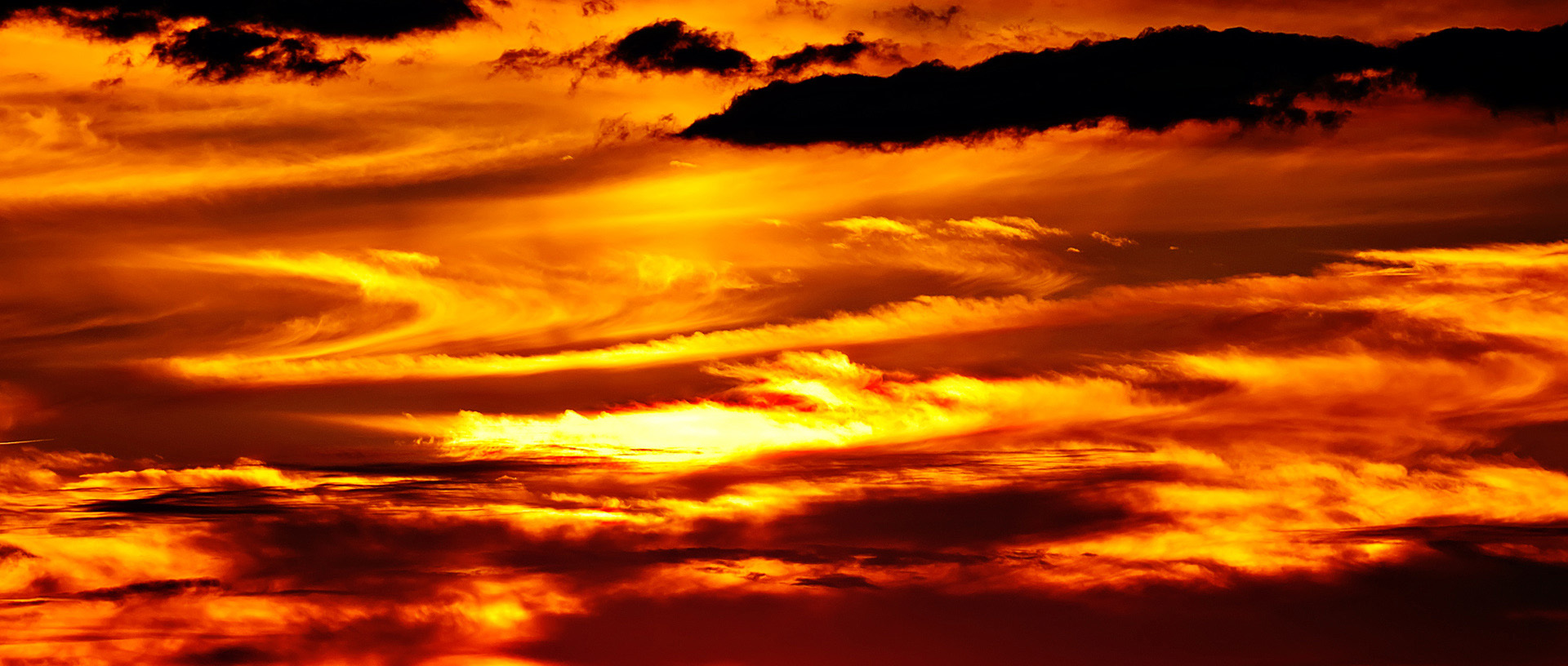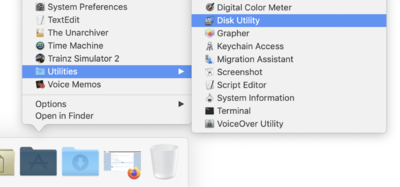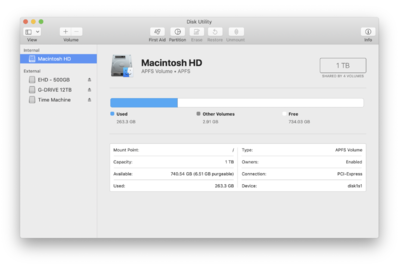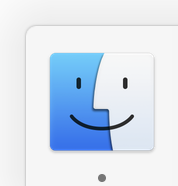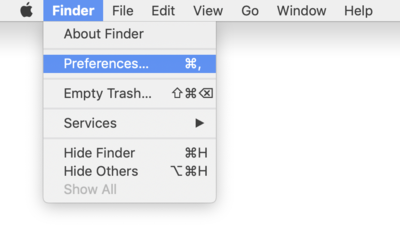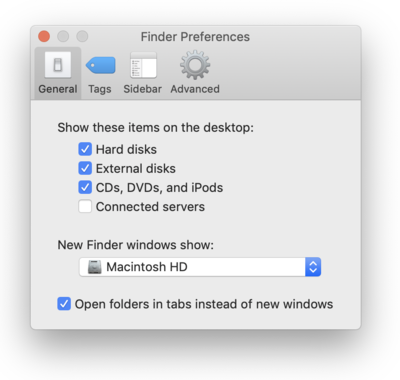-
Posts
4,097 -
Joined
-
Last visited
-
Days Won
51
Everything posted by Brian
-
Here is a big digression... For me personally, I own a 27" iMac computer. I fix Windows Computers and Servers all day long. When I come home, I do not want to "fix" my own computer. I don't want to hunt down patches and updates, make sure the latest rounds of updates are installed, worry about the latest video driver update screws up Photoshop. I just want my computer to work. Not reboot while in the middle of something, not ask me if I want to update this or that...none of that. Oh, I also do not run any sort of Virus Program and if I do happen to get infected by something, it's pretty easy to remove. I'm not saying that Macs aren't 100% immune, but there are a lot more Windows Computers out there than Macs, so the hackers and the like are more prone to go out and get a bigger and easier fish. A lot of my Technician friends also own Macs, so that tells you something. LOL!! The internet and FB are the same on both. I now have a Right-Click on my mouse. Firefox, Chrome, YouTube, Netflix, all work the same. Photoshop is the same. Microsoft Office, mostly is the same thought there are some differences. The big difference is the COST. Macs have never been cheap and you will get all sorts of people screaming at you that Macs are over-priced and not worth it, and you can get so much more, don't drink the Kool-Aid and blah-blah-blah. I say there are more important things to worry about. That being said, if you have the money to fork out on a Mac, you have no excuse not to have the ability to purchase a calibration device, a round of test-prints and to take Damien's inexpensive classes.
-
"...is a Mac worth it?" That is going to be the title for a yet-to-be-releaed FAQ section, so thank you for asking it. These statements, or variations of them are probably the #2 Macintosh-related question, which is "What Mac do you recommend..." or variations of that statement. First and foremost, always remember this phrase: A Macintosh computer, whether it's a Mac Laptop or Mac Desktop isn't "Better," it's just "Different." Well, at least with today's technology and computers. Way-back in the late 1980's, Adobe Photoshop was ONLY available on a Macintosh computer, as well as Adobe's other products, such as Illustrator. Back then Apple was willing and even pursued the Art and Creative World, like Music Development, and Windows primarily went after the Business Market and ultimately video games. So there was this split between the two worlds, and I'm not just talking about Windows and Macintosh, but between a "Closed Environment" and a "Open Environment." You still see this split today and not just with computers, but with Smart Phones as well. People have love-affairs with their Droid phones while others, like myself, love their iPhones. It's very difficult to make the other-side see a different viewpoint as they are dedicated to their devices of choice. Bill Gates and Microsoft, like today's Android Smart-Phones, encouraged a "Open Environment," which allowed all sorts of companies and developers come up with products to work on a single platform, Apple took the other-side of the coin, and that was a "Closed Environment," in which Apple controlled 100% of the "User Experience." Meaning you either played by Apple's rules or you didn't play at all. Each side of this coin has advantages, as well as disadvantages. One benefit with Windows-based computer, is there is a lot more development and products, that-being-said, the downside is there is a lot of development and products. This can result in security holes as well as just plain crappy software which didn't always play well with the hardware. Speaking of hardware, just think of all of the different choices you have when it comes to a Windows-based computer. Thousands and thousands of hardware choices and combinations!! Most of the time, things work. Other times things can be a challenge and you just have plain compatibility issues. Apple on the other hand, took a different approach to the personal computer. Is was Steve Jobs that wanted to have the hardware AND software work together seamlessly, and have a "Controlled Experience" in the process. Everything would "just work" together and that spirit still lies in today's Apple products. Just think how a iMac, iCloud, iPhone, iPad, etc. all just work together without any real user input. Apple software, though not as powerful as their counterparts, like Microsoft, also "just works" on a Mac. Hardware is designed around Apple Software and things are locked down. Only Apple has the secret to the "Sauce" in their products. This in turn, usually infuriates the majority while the minority...actually prefers it. With having limited options allows software developers only have to worry about a few small choices. For example, instead of having to make something like Photoshop work with a 1000 different video cards, Apple I think has like 8-10 choices of video cards across their lineup, from Desktop to Laptop. (But don't quote me on that, I'm just using this as a personal observation/opinion.) The downside to not having choices and having all options come from a single source is price. The Apple Macintosh has NEVER-EVER-EVER been in-expensive. The original Macintosh from 1984 debuted at $2499, which in today's money translates to $6207.17 (as I type this.) With today's marketing, that would result around $6299 or $6249. So even though a iMac is still expensive compaired to a Windows computer, $2000-$3000 for what you get in terms of power is significantly cheaper. The Macintosh Pro line though, is more in line with the $6000+ price-tag. Bottom Line: Apple's prices have been consistent when it comes to a Macintosh. The one in 1984 was $2499 and the 27" iMac model that I recommend starts at $2399. OK, I'm really digressing. Remember above how I stated that Windows went after the business market and Apple was more open to the "Creative" market? That's why there is such an entrenchment when it comes to Apple's products and things like Photoshop and Illustrator, as well as software that Musicians and Producers use, it's usually Mac-based. Or is only available on the Mac. Adobe Photoshop was first only available on a Macintosh Computer. Windows 2.0 and later 3.0/3.1 really didn't mature until Windows 95. So you had an entire generation of creatives that only used Photoshop on the Macintosh; it was completely foreign to them if it were on a Windows platform. I've heard of Art Directors totally dismiss a person's work simply because they had a Windows Laptop under their arm, instead of a MacBook Pro when they walked in the door. I had a friend who worked for Nickelodeon studios in NYC, who designed the Spongebob SquarePants Movie Logo, who was forbidden by Viacom (Owner of Nickelodeon) to create or tweak any work on a Windows-based computer. She had to use a Macintosh computer. So while the average person would scoff at such a thing, and they are right, there is still a huge prejudice against Windows running Photoshop. Granted a person's work SHOULD be judged for what it is instead of what it was produced on, but this is the real-world and if Photography is paying my bills and putting food on the table, I don't care what a Keyboard-Warrior / Photographer says, I'm walking in the door with a MacBook Pro. They are posting their images on Social Media to get Likes and Swoons, I'm in it to get paid. LOL!! OK, so let's really answer the question, why are Macs supposed to be "Better" and what makes them so? Remember how I said you have limited choices when it comes to Apple's products? Apple typically does not cheap-out when it comes to their components. Of course, there is a lot of evidence to the contrary, just ask any board-level repairmen and they will tell you that Apple does some pretty stupid stuff, but the original intent from Steve Jobs was to have the components on the inside look as good as the products on the outside. One of the main things that Apple has always done, is to use really good displays. The early models of Macintosh, as well as external monitors that were tube-based (CRT) were Sony Trinitron displays, which at the time were better than the average display. Even today, a Macintosh Computer's display is really good out-of-the-box, though it needs to be calibrated as they tend to run on the cool-side, which usually results in over-warming your photographs during post. It's the display, in combination of the entrenchment of the Art World and Macs that usually dictate a sales-person's point-of-view that Macs are "Better" when it comes to Photoshop. It's almost hyperbole and is a "Safe" answer; just like "Nobody got fired for buying a IBM..." people just recommend Macintosh when it comes to Photoshop. These days, there are so many choices when it comes to a Windows-based computer. You can easily get a IPS-based display for a Windows Desktop without much searching. The Dell Ultra-sharp IPS-based monitors come to mind. They are affordable and usually easy to calibrate. Laptops on the other-hand, are much more difficult to find a IPS Display being used. What's the deal with IPS? Simply put a IPS or an In-Plane Switching Display Panel, ensures that colors, contrast and sharpness are consistent from edge-to-edge. These displays tend to cost more to produce and that's why you won't find many laptop models with them installed. This is one of the main "Gotchas" when it comes to a Windows Laptop for editing photos, but that's an article for another day. Let's get back to Macintosh computers. The truth is, Adobe Photoshop will work fine on both a current Apple Macintosh and a Windows 10 Computer. Either is fine. The big difference is the display on which you work on, as well as having the right components under-the-hood. If you are editing photos, you NEED an IPS Display, whether it's a Laptop or Desktop. When it comes to a Mac, all of their Laptops and Desktops are IPS-based, so you don't have to think about it. A Windows computer...you need to make sure. Especially when it comes to a laptop. Now if you are planning on switching back to a Windows computer, plan on some pain in switching back, as the file-systems are completely different between the two worlds. You can't just simply plug in your Macintosh EHD to a Windows Computer and immediately have access to your images. It doesn't work that way. They will need to be converted and I would actually purchase a fresh EHD to transfer your images to. The reason is, a Macintosh, by default, will READ a Windows Drive but NOT WRITE TO IT. The intent is to make it very easy to switch from a Windows computer to a Mac, but NOT THE OTHER WAY AROUND!! The other reason is it cuts down on technical support calls as Apple doesn't want to hear complaints when a file that was created on a Mac doesn't open properly on a Windows computer. Not their problem. Often a Software Translation Package of some sort usually works, but it isn't bullet-proof. That's why I recommend using a fresh external HD, partitioned and formatted on a Windows computer to transfer your images to, and leave the existing Mac EHD alone. It's just safer in the long run just in-case if things go horribly wrong. So what should you buy? Whatever you feel comfortable with. If that's a Mac, so-be-it. If you want to switch to Windows, that's fine too. Photoshop works the same on both. The downside, as I write this article is we are coming off the trade-war with China (If you live in the US) and now we are dealing with the Coronavirus, which has halted production of A LOT of computer components and equipment. Stocks are running low, it's now a really bad time to be in the market for a computer. So keep that in mind when you go shopping, you might have to wait a little more or be forced to pay more than you would have a few years ago for the same thing.
-
Under $5000 for everything? What are you planning on shooting in your studio? People? Products? How large dimension-wise is your studio? You do realize I could blow $5000 on a set of lights, no modifiers or even stands, right? What brand did you shoot with before? Any preferences?
-

HELP!! All my actions have vanished!!!
Brian replied to Nat_OD's topic in The Windows & PC Hardware Forum
Now is the time to think of backing up your Actions, just in case. -

HELP!! All my actions have vanished!!!
Brian replied to Nat_OD's topic in The Windows & PC Hardware Forum
Have you tried rebooting your computer? Let's start there first. -

Backing up & Hard drive options
Brian replied to SophieBowden-Caldwell's topic in The Macintosh User Group
First, plug in one of your new Western Digital Externals into a USB Port on your Mac. It may appear on the desktop, it might not. Next, Open Disk Utilities. Head to Applications Menu >> Utilities >> Disk Utilities. This is where your Disk Utilities might look slightly different. Anyway, here is mine: At this point, you are going to have to work with me. Post a Screenshot in this thread of what your Disk Utility Window looks like and we will continue. -

Backing up & Hard drive options
Brian replied to SophieBowden-Caldwell's topic in The Macintosh User Group
OK, since you are on MacOS Mavericks, your screens will look different, but the process should be similar. The first thing I want you to do, if you haven't already, is turn on the feature that allows you to see HDs and other "Mounted Devices" on your Mac Desktop. Open the Finder. The easiest way is to click the Smiley Face on your DockBar: Then head to the Finder Menu and select Preferences: Once there put checks next to these items and change the bottom to "Macintosh HD" if you want: From there, just click the Red Circle in the upper left corner to apply the changes. Now for Part 2... -

Backing up & Hard drive options
Brian replied to SophieBowden-Caldwell's topic in The Macintosh User Group
OK, great. Refresh my memory. What MacOS are you running currently? Which hard drives do you have now and what are their capacities? Will you have a dedicated Time Machine Drive? -

Error when opening bridge or.....
Brian replied to carolc's topic in The Windows & PC Hardware Forum
I’m going to ask for those details. Anyway, is the error code always 0xc000000d? Or does it change with each program? To answer your question, your Windows Operating System has some corruption and we need to fix this ASAP, because it’s going to slowly get worse over time. So hold off editing sessions and get me the details about your computer’s health. -
I would just stick with the PS App on your iPad. DO NOT INVOLVE APPLE PHOTOS AT ALL. Life is too short for that sort of aggravation.
-
As with most things, the first question I will ask is: "Budget?" The next few questions that I will ask in regards to this topic is: What do you plan on shooting with said flash/strobe? Newborn? Groups / Families? Macro work? Where will most of your work take place? Will this be on location or in a studio of some sort? Are you planning on 'running and gunning' while using flash, like at a sports event or wedding?
-
Don’t fall for marketing. Apple Photos can edit Raw files, but it’s NOTHING like ACR sliders. It’s more like the built in Camera App on a iPhone or iPad that allows you to tweak some parts of the photos. It’s not a real editing program as far as I’m concerned. Now, if you want to shoot Raw / import then throw on a bunch of IG-Like filters, be my guest. if you are looking for the same power and level of control that a program like Adobe ACR, it’s not Photos. Basically your iPad would be a great viewer to cull, but I feel a laptop still would be a better fit for true editing. PS for the iPad. I’ve never installed it, I also don’t own a iPad. It is highly recommended by Adobe to use an iPad Pro instead of just a regular iPad, though a modern one that can use an Apple Pencil will work. I did find a FAQ Page and it seems you just need to sign into the Adobe Cloud Manager Software on your iPad and download the App. If that’s what you are trying to already do, I suggest contacting Adobe. I’m thinking there is an issue with your PS CC Cloud Subscription. https://helpx.adobe.com/photoshop/using/photoshop-ipad-faq.html#use-photoshop-ipad
-
If there is anything super important on that drive: stop. Step away from the drive and send it to these guys: https://www.gillware.com You could be right, it could be a bad USB port or the controller board on the HD migh have went out on you. If you aren’t hearing the “Click....Click...Ka-Thunk....Click” coming from the HD, you have a decent shot of recovery. If you keep messing with it in a panic trying to “fix it,” chances are you will just make it worse. I will warn you, Extreme Data Recovery isn’t cheap, depending on what needs to be done. That being said, if you shoot professionally, it’s cheaper than legal fees if you get sued.
-
Power strips do wear out over time, so keep that in mind. They won’t let you know when they wear out, they just turn into glorified extension cords on their own. Fun Times!! At the very least you should have one and not hook the Mac directly into the wall, but if the power strip is from the 1980’s, compete with Faux-Wood Panel stickers on the side and it’s yellow instead of white, due to age...you probably should avoid using it on your brand new computer. It boggles my mind! I have PERSONALLY seen a person buy a $2000+ brand new fancy computer and not spend the extra $20-$30 on a new surge protector to go with it, because they don’t want to “waste money” since they already have one. SMDH. Waste $2000 and cheap out on the $30 power strip LOL! Personally, I use something called a UPS, which is a surge protector on steroids and has a battery built in. A UPS allows for a graceful shutdown which if you suddenly lose power. Please do not misunderstand me, people automatically thinK, “...must have gotten a surge and that’s what broke my computer!” Not in every case. Now, if you have lots and lots of brownouts / spikes over the years, then I can say yeah, it’s possible. In reality, I think you just got a “Lemon.” The Asus Republic of Gamers line is usually decent. For that question, post a new thread in the Windows Hardware Forum.
-
Hello Rebecca! I'm so glad you posted here as I just saw your post on FB Ask Damien. *SIGH* I'm going to address each question one-by-one. This isn't good... This indicates a problem with the power supply or a certain component's power randomly being interrupted, specifically the 5 volts that comes from the power supply. It could also be a motherboard problem as well. When you press a reset button on a computer, the +5 Volts is interrupted, which freaks the computer out and it resets. It could also have a bad ground somewhere. Still indicates a problem with the motherboard, or some sort of controller chip isn't getting enough power or something is happening on the power rail to the component / capacitor. (Component level repair on a motherboard, etc.) Bad video card is also on the table. Photoshop CC 2020 does not seem to play well with the 2015-era iMac's Video Card. Older versions, like PS 2019 seem to work better, and this information I got from other members in your situation (owing 2015 iMacs.) Realistically PS 2017 is the best choice for your 2015-era computer. Unfortunately, you are on Catalina and only PS CC 2019 and PS CC 2020 are Catalina Compatible. How do you go back to Mojave? Format the HD and install from a Mojave Thumbdrive. There is absolutely no-way to downgrade and it's a complete wipe / re-install. Unfortunately, you as the consumer / owner, there is nothing you can do. I'm so sorry. This isn't a software patch or turn off a setting kind-of-fix. I think you just got a bad Mac (aka Lemon) to begin with. Mojave crashing your HD...that could be the culprit, though I can not officially say. During the update, sometimes Apple updates your computer's firmware in addition to the OS being updated. Other components, like the video card's Firmware could also be updated at this time. It is plausible that upgrading to Mojave irritated an existing issue and not only do you have a motherboard / power-supply physical problem, but a possible corrupted firmware somewhere in your computer. As to why this only happens in PS, it is possible that this affected area is ONLY accessed when PS CC 2020 is in use. Using your Mac for general computing doesn't trigger the problem; watching Netflix, wasting time on FB, checking e-mail...your computer will work "fine." Kinda figured. I would not bother trying to fix this, as it's a 21.5" iMac. You are looking at least $800-$1000 repair bill between parts & labor. In my humble opinion, 21.5" iMac models are a complete waste of money as they usually have slower and less powerful components installed as compared to their 27" counterparts. This is coming from a Mac owner who loves his Mac and iPhone. The 21.5" models used to not be this way, and I even owned a 21.5" 2009 iMac. With the models today, Apple really wants you to "Go Big or Go Home." As to what Mac do I recommend, especially for Photo-Editing work, please give this article a read.
-
I'm saying pull the Ethernet Connection / disable the WiFi. But that's a little extreme for now.
-
Interesting. Going forward, it’s a good idea to not have that computer hooked up to the internet. No telling what could be lurking in the shadows. Especially if it’s one that has old software that won’t / can’t be upgraded to Windows 10.
-
No idea on this one. You might have to call Adobe, update to the latest PS CC 21.0.3, which was released a short time ago or possibly do a reset of some sort on your tools.
-

Backing up & Hard drive options
Brian replied to SophieBowden-Caldwell's topic in The Macintosh User Group
I will be away from my computer next week as well. I still will have access, just not able to post screenshots, so we will pick this up after next week. -

Backing up & Hard drive options
Brian replied to SophieBowden-Caldwell's topic in The Macintosh User Group
One more thing... When you get those Western Digital EHDs, LET ME KNOW. We will need to prep them for use on your Mac. DO NOT USE ANY BUILT-IN WESTERN DIGITAL SOFTWARE to do this, no matter how much it bugs you. Everything that you require is built into the Operating System. -

Backing up & Hard drive options
Brian replied to SophieBowden-Caldwell's topic in The Macintosh User Group
This is totally your choice. It boils down to what you are comfortable with. If you do a lot of sessions, 18 Months seems reasonable. I know other Photographers who keep stuff for decades. You'd be surprised on how many requests are generated for photos when someone dies. But if you are a newborn photographer, your situation might be different. It really depends on WHAT type of Photographer you are. If you are into Commercial Work, and need to have proof of negatives just in case you need to go to court, your needs might be different than one who sets up hay-bails and corn-stalks for "Fall Mini Sessions." Personally, I keep all of my stuff and will gradually move old Weddings that I've shot over to a EHD that's put into a storage unit. So I tend to keep stuff for years. If 18 Months works for you, keep doing what you are doing. -

Backing up & Hard drive options
Brian replied to SophieBowden-Caldwell's topic in The Macintosh User Group
If you store a lot of data on your main hard drive and work off of it exclusively, which is probably the case at this point, you can leave it on and it will automatically backup every hour or so. The first Time Machine Backup usually takes awhile during the first-go-round. Technically, if you have a large enough HD (like a 4TB Drive,) Apple wants you to have the TM EHD hooked up at all times and let it run in the background. I will say, it works REALLY WELL. I once had a catastrophic failure, had the HD replaced and restored from a TM Backup. I was operational at about 99% with having do tweak a few things here and there, like 3rd-party license keys and such, after about 20-30 minutes. Steve Jobs wanted doing data backups to be "Fun" and to have little input as possible for the end-user, so they couldn't screw up things. Time Machine is a "Set It and Forget It" type of thing, and in reality, it's designed just to work in the background; it doesn't take that much system resources either. I personally use my TM Drive about once a week, basically it's what you are comfortable with losing. If you can afford having a week's worth of possible data going "poof," just doing it once a week is fine. If you can't, or if you like adding / deleting files on a normal basis, then more often or at the very least, daily. Simply power-off the EHD or eject & disconnect the TM Drive so Time Machine won't kick in if you want to hold off on backups. You could also flip the switch in the System Preferences / Settings but this is a little dangerous, as you could forget to turn TM back on each time. When you configure Time Machine, make sure you EXCLUDE any other external hard drives. You just want to backup the Internal Mac HD. Open the Time Machine Preferences and click on the "Options" button. You should see your other EHD (if it's hooked up) in the Exclude List. I'm currently running a TM Backup as I type this and my Exclude List looks like this: -

Backing up & Hard drive options
Brian replied to SophieBowden-Caldwell's topic in The Macintosh User Group
First, backing up via Time Machine is perfect for backing up your internal Macintosh HD on your 2013 iMac. I would not use Time Machine that is backing up on an external to backup another external as this causes issues. Ultimately, you want an external HD that is just used for Time Machine Backups only. When people try to "Kill Two Birds With One Stone" they end up having issues and failed backups. Do not cheap out when it comes to backing up, especially if you are truly running a business. This is just one of those costs of doing business. My recommendation for a Time Machine Drive is to purchase a size is at least double of what your internal hard drive capacity is now (or larger, since 2TB Drives are getting harder to find these days and have been replaced by 4TB models.) So if you have a 500GB HD, that would be a 1TB External used for Time Machine, if you have a 1TB Macintosh HD, a 2TB HD, etc. etc. Again, You do not want to use an external HD for Time Machine AND as a regular EHD. Even if you partition it to two separate partitions, you are really playing with fire. In reality, you are looking at two External Hard Drive Devices. Since you have a studio, and your 2013 iMac contains customer images that is located in said-studio, I really think you need two different types of External HDs. One, is just for the Time Machine Backup. The other, will be either another external HD which will follow you home each night (It's important to have an off-site backup) or something called a RDX Unit. A RDX unit is usually made by Tandberg. It's the combination of a External Hard Drive and a Tape Drive. Instead of Magnetic Tape in a Cartridge, there is a little hard drive. These cartridges come in different sizes, from 500GB to it seems around 5TB these days. Here is a 2TB RDX Cartridge. These cartridges go into a RDX Dock, which attaches to a USB Port. Tandberg is the main manufacturer of these devices, and HP also makes them. When you insert the cartridge into the Dock, it acts just like a EHD. Simply copy and paste your customer files to the RDX Cartridge, then "Eject" the Cartridge and put in in it's transport case and take it home. You could have two RDX Cartridges, a Week A and a Week B or something that is even monthly based. Totally up to you. Plus, if you ever wanted to upgrade the capacity, all you would need to do is purchase a larger RDX Cartridge, the Docking Station stays the same. The only thing you want to avoid with RDX units is to not drop them. Even though they are rugged and have plastic transport cases that can take a beating, they still have little hard drives inside of them. That being said, they are a lot more durable than a typical EHD that you would move around. As far as an external hard drive, the brand that I recommend and use is G-Technology. They come Mac-Formatted and there are cables in the box. You could go with a simple 4TB for Time Machine and a much larger one, say a 10TB model that is just meant for your data files. I will warn you, these are Enterprise-Grade Hard Drives and are NOT CHEAP. If you really wanted to save some cash, you could go with a lower end EHD, such as this Western Digital 2TB EHD. This EHD would be just used for Time Machine. So if it dies, it's not a big deal...just as long as your internal Macintosh HD doesn't die at the same time. (Plausible, but HIGHLY UNLIKELY.) Better yet, I'd opt for this 3TB Gaming EHD from Western Digital. I am a big fan of the WD Black Line of drives (Class of Drives, not actual color.) WD Black Hard Drives are an advanced model, and just below a server-class / Enterprise-Grade Hard Drive. I have owned several WD Black Models over the last 30 years and have never had a problem with them. They run fast, run quiet and run cool. Even though it's a "Gaming" EHD that I linked to, it will work just fine on your Mac. All we would have to do is repartition and reformat the Drive. That takes like 5-10 minutes to accomplish. No software needed as it's built into the OS and I can help you with this. If you are in the market for a new iMac, I would HIGHLY RECOMMEND just purchasing that 10TB Thunderbolt G-Drive now. The new Thunderbolt Ports on the new iMacs are FAST and believe it or not, you can actually work off this drive without any lag. Of course, this makes Damien's head spin, but I do it all the time. That being said, I would never do this with a USB 3.0 EHD, that interface is just too slow. -
Yeah, that PC is probably not a candidate for Win 10 either. For your view files problem, check how you are “viewing” your files and make sure they just aren’t with a certain file extension. Other thoughts, that HD could be developing bad sectors or there is even more Windows 7 issues that are only going to get worse as time goes on. Those programs need to be updated or replacements must be found. I get it, I work in IT, and this type of thing with DOS Software working in XP compatible mode is just not going to work that well long term. Remember...as of right now, the 1990’s started 30 years ago. Software from that era is 30 years out of date.
-
Bugs and error messages are only going to get worse going forward. This time it's just a Shutdown thing. Next time is could be a back-door security thing rendering your computer to a boat-anchor status. Seriously, please start saving for a new computer and have Windows 10 in your plans for 2020.

